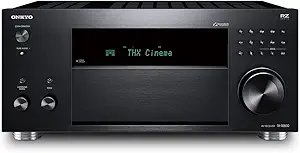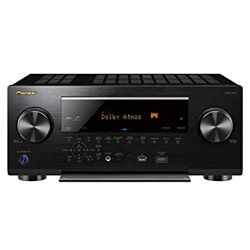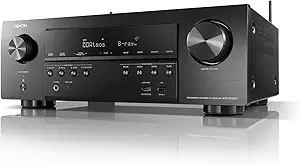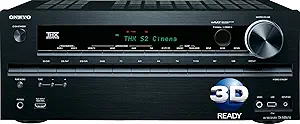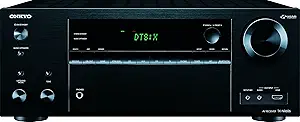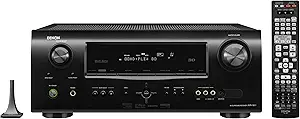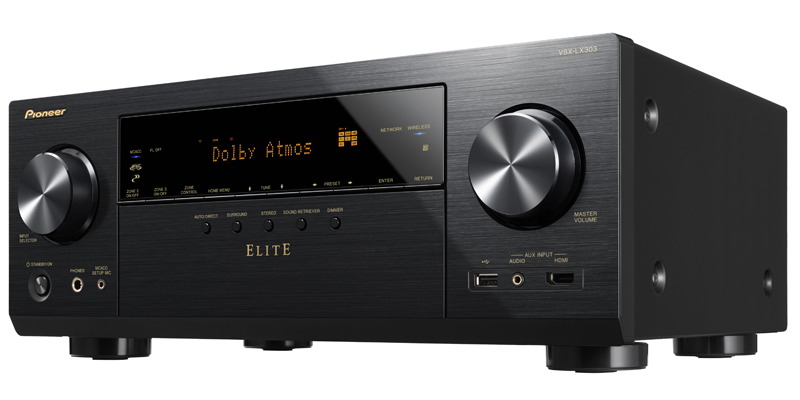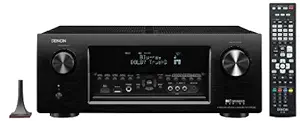Onkyo TX-RZ830 VS
Pioneer VSX-LX503
Pros & Cons
Onkyo TX-RZ830
VSPros
- The receiver has Google Assistant support which responds well to voice.
- The output sound and video quality is stunning – the sound is deep and it is distortion-free.
- It passes the Amazon Atmos content.
- Onkyo TX-RZ830 is THX certified that guarantees the good sound.
Cons
- Built-in Chromecast is intended only for music streaming.
- The android application does not work correctly with the latest software.
Pioneer VSX-LX503
VSPros
- It is possible to control the receiver through Google Assistant or Amazon Alexa, which gives full voice control over the basic functions of the receiver.
- The output sound is deep and clear – no lags or noise.
- It assures a stable wireless connection.
- The device can cope with probably any HDMI component it receives.
Cons
- AirPlay is not stable.
- Some customers find the setup process quite complex (due to the poor documentation).
Specifications
Groups
| Specification | Onkyo TX-RZ830 | Pioneer VSX-LX503 |
|---|---|---|
| Signal Processing | ||
| 3d Pass-through | ||
| Video Conversion/scaling | HDMI to HDMI scaling, analog to HDMI up conversion | HDMI to HDMI scaling, analog to HDMI up conversion |
| Hdmi Pass-through | up to 4K | up to 4K |
| Upscaling Via Hdmi | up to 4K | up to 4K |
| Connector Type | ||
| Coaxial Digital Outputs | has not | has not |
| Optical Digital Outputs | has not | has not |
| Hdmi Outputs | 2 | 2 |
| Hdmi Inputs | 7 | 7 |
| Coaxial Digital Inputs | 1 | 2 |
| Optical Digital Inputs | 2 | 2 |
| Phones | 1 | 1 |
| Av Inputs | 7 | 7 |
| Usb | 1 | 1 |
| Subwoofer Outputs | 2 | 2 |
| Radio | ||
| Tuner Bands | AM/FM | AM/FM |
| Tuner Type | digital | digital |
| Preset Station | 40 | 40 |
| Additional Features | ||
| Auto Power Off | ||
| Bi-amplifying | ||
| Audio Return Channel (arc) | ||
| Apple Air-play Support | ||
| Advanced Sound Retriever (asr) Technology | ||
| Three-zone Capability | ||
| Smartphone Remote Control | ||
| A-b Speaker Switch | ||
| Dual-zone Capability | ||
| Pure Direct Mode | ||
| Amplifier | ||
| Total Harmonic Distortion | 0.08 % | 0.08 % |
| Frequency Response | 5 Hz-100 kHz | 20 Hz-20 kHz |
| Output Impedance Per Channel | 6 Ohm | 8 Ohm |
| Output Power Per Channel | 180 W | 120 W |
| Total Output Power | 980 W | 1090 W |
| Clock | ||
| Built-in Clock | ||
| Sleep Timer | ||
| Audio Formats | ||
| Mp3 | ||
| Flac | ||
| Apple Lossless | ||
| Aiff | ||
| Aac | ||
| Wma | ||
| Wav | ||
| Built-in Display | ||
| Type | fluorescent | fluorescent |
| Colour | black | black |
| Sound Features | ||
| Digital Content Protection | HDCP 2.2 | HDCP 2.2 |
| Surround System Class | 9.2 channel | 9.2 channel |
| Surround Sound Effects | Theater-Dimensional Virtual Surround | Theater-Dimensional Virtual Surround |
| Audio D/a Converter | 24bit / 192kHz | 32bit / 384kHz |
| Built-in Decoders | ||
| Dolby True Hd | ||
| Dolby Surround | ||
| Dolby Digital Plus | ||
| Dolby Atmos | ||
| Dts:x | ||
| Media Content Source | ||
| Usb-host | ||
| Network | ||
| Bluetooth | ||
| Dimensions | ||
| Dimensions | 15.7 x 17.2 x 8 inches | 15.2 x 17.2 x 7.3 inches |
| Connectivity Interfaces | ||
| Ieee 802.3u | ||
| Ieee 802.3 | ||
| Wi-fi | ||
| Bluetooth | ||
| User Manual | ||
| Manual | tx-rz830.pdf | vsx-lx503.pdf |
| Functions | ||
| Network Audio Player | ||
| Internet Radio | ||
| Digital Player | ||
| Power Device | ||
| Standby Power Consumption | 0.15 W | |
| Operational Power Consumption | 850 W | |
| General | ||
| Brand | Onkyo | Pioneer |
